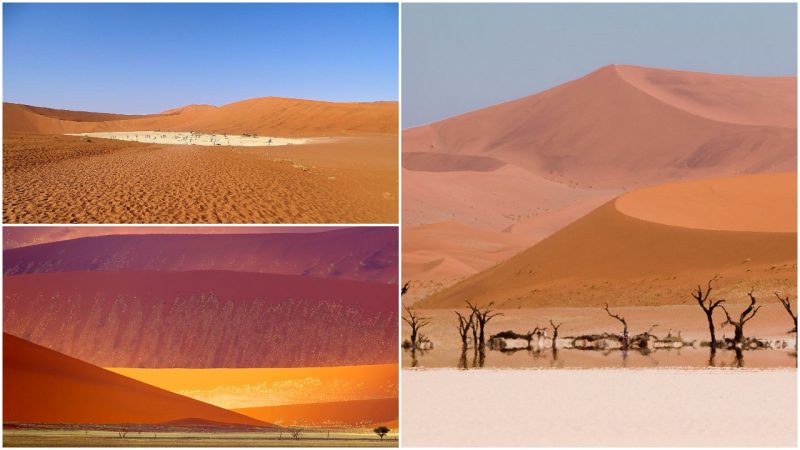In the southern part of the African continent, there sits the Namib desert.
It looks at the Atlantic Ocean and spreads across Namibia, South Africa, and Angola. Having been arid for roughly 55 to 80 million years, the Namib may just be the world’s oldest desert. It also contains some of the world’s driest regions.
The Namib Naukluft Park sits in the heart of the ancient desert and it is the largest protected area in the African country. The park was formed by joining together a few regions: Namib, Naukluft, Sossusvlei/Sesriem, and Sandwich Harbor. Despite this being a vast area, only a small portion of it can be seen by visitors.
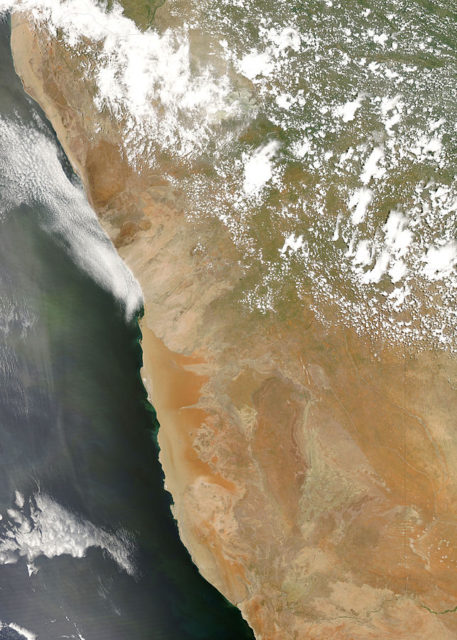
Perhaps one of the most alien realms of the entire desert vastness is Sossusvlei, conquered by rising red dunes. The Sossusvlei (“vlei” meaning “pan”) is a salt-clay pan overwhelmed by gigantic dunes. In the Nama language, “Sossus” stands for something close to “blind river”. In this case, the wording refers to the Tsauchab River, which when in flood flows through the desert, but fails to reach the Atlantic by approximately 30 miles.
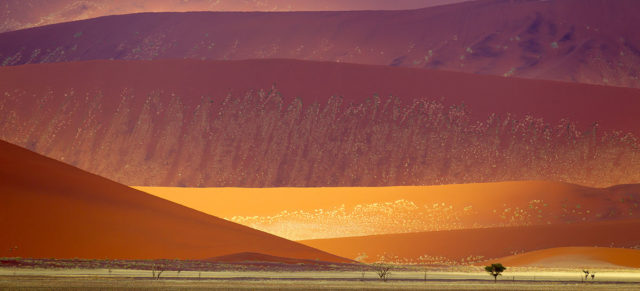
The sand dunes have cut off this river on its final route to the ocean, forming a variety of vleis. The Sossusvlei is one of the most spectacular vleis of all. Roughly every ten years, and following exceptional rainfalls, the Tsauchab river fills the clay pan with water forming a new temporary lake. The lake remains intact for a while because of the impermeable clay layers; its turquoise blue water makes an astounding contrast to the surrounding dune landscape.
Nearby the Sossusvlei lies perhaps the most impressive site of all – Dead Vlei. This natural landmark has long been cut off from the Tsauchab River thanks to a truly gigantic dune. The astounding site is now dominated by dead camel thorn trees, which have been preserved due to the remarkably dry climate that spares the trees from total decay.
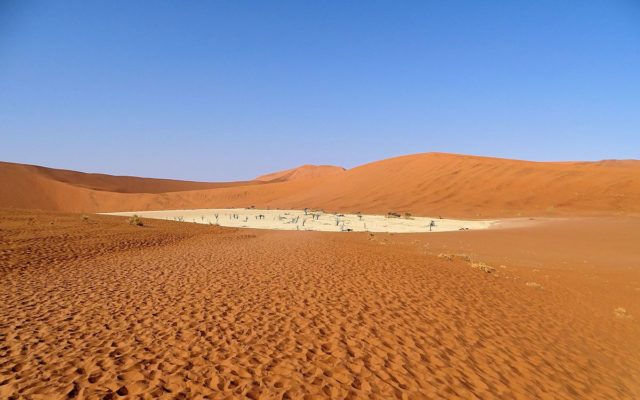
The Deadvlei means “dead marsh”, coined from the English “dead” and the Afrikaans “vlei” that designates a lake or marsh situated in a valley in between dunes. The site is sometimes also referred to as the “Dooie Vlei”, presumably its full original Afrikaans name. The Deadvlei is distinguished by its blackened, petrified, dead camel thorn trees that contrast with the white pan floor.
The pan was formed way back in time when the Tsauchab River had flooded and allowed those trees to grow. It is estimated that their age is around 900 years. However, once the climate changed, the sand dunes encroached on the pan, blocking any further flow of water into the valley The wood does not decompose because it is too dry, so ever since they have stood as “monuments to their own doom”.
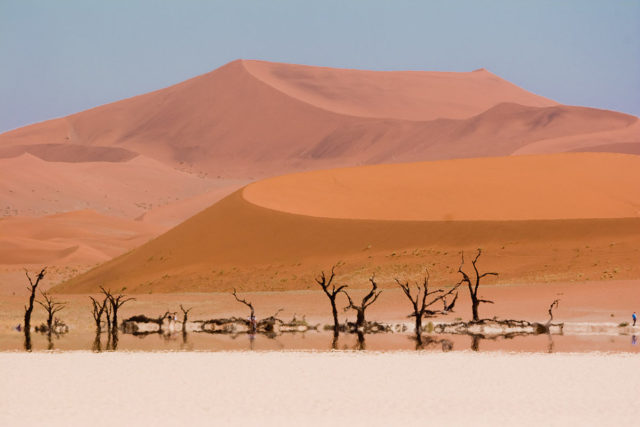
At the edge of the Deadvlei, there is also the “Big Daddy” or also known as the “Crazy Dune”. Allegedly, this is the highest sand dune in the world, and it takes up to two hours to climb it. Atop the dune, an incredible view opens to the intrepid climber who is determined enough to go through the struggle of ascending the dune. Running down from the top is an adventure of its own right – it’s fast and furious. The height of the dune reaches not more than 1300 feet.
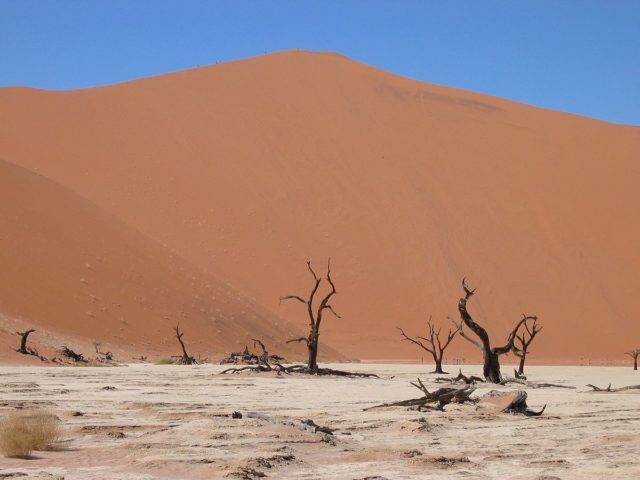
Despite the dead and petrified trees dominating the scene of the Deadvlei, reportedly, there is still some life around. The salsola shrubs are commonly known for their resilience and great salt tolerance and they are a rare sign of life in the deserted place. The clamps of Nara, an exotic melon that can be found only in Namibia, is also known to grow here. Both the plants appear to thrive well despite the extreme weather conditions.
Read another story from us: New Flyover photographs of Sleeping Bear Dunes show hidden shipwrecks
It is a 44-mile drive from the park gates to the dunes of Sossusvlei and Deadvlei. As well as enjoying perhaps the most beautiful sunrise or sunset over the Namib desert vastness, at night spectators can also enjoy some of the clearest starry skies on the planet.Deadvlei has been used as a shooting location for a few movies too, including “The Cell”, starring Jennifer Lopez.
